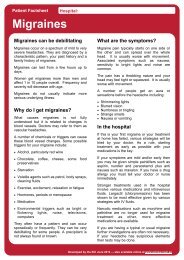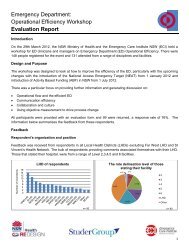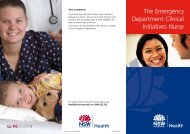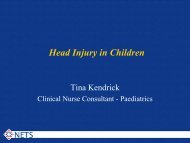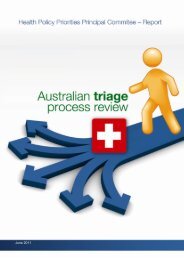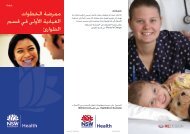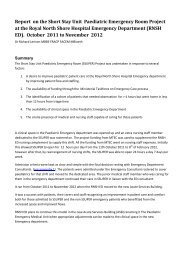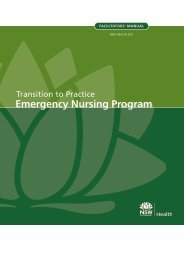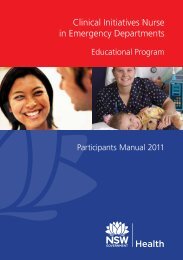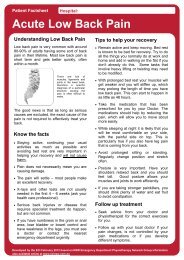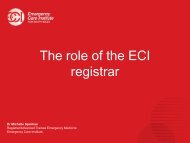Emergency Department Models of Care 2012 - NSW Health
Emergency Department Models of Care 2012 - NSW Health
Emergency Department Models of Care 2012 - NSW Health
- No tags were found...
Create successful ePaper yourself
Turn your PDF publications into a flip-book with our unique Google optimized e-Paper software.
3.3 Resuscitation (including trauma)Quick triage & RegistrationTriageRegistrationResuscitation/traumaWhat is the model?The Resuscitation Model <strong>of</strong> <strong>Care</strong> is a set <strong>of</strong> guidelines that outline the most appropriateclinical and preparatory processes and team model that should be used in the resuscitation <strong>of</strong>patients in the ED (including trauma management).It is recognised that all EDs have many <strong>of</strong> these processes in place, yet there remains variationin the implementation <strong>of</strong> training and support and communication processes.Why use the model?The resuscitation MOC describes a coordinated and strategic approach to managingresuscitation patients.It allows the ED to appropriately allocate resources to provide quality care and to minimisedisruptions to the rest <strong>of</strong> the ED. The key reason for implementing the Resuscitation MOC isto provide:■■■■■A coordinated team approach to better manage patients requiring resuscitationA structured process for resuscitation patientsStandardised communication between pre-hospital personnel and ED staff who willassume care for the inbound patient(s)Appropriate delivery and turnaround times for diagnostic servicesOptimal allocation <strong>of</strong> staffing resources – this will allow senior ED decision makers toprovide oversight <strong>of</strong> the care <strong>of</strong> the patient requiring resuscitation whist minimising delaysto the general ED workflow.Key PrinciplesEstablish team, training and guidelines■■■■Establish a resuscitation and trauma team, defining membership, leadership, roles andresponsibilitiesConduct training for the team to improve team competencies (knowledge, skills attitudes)and achieve desirable performance outcomes (timely responses, high quality decisionmaking,and reduced patient safety risks).Use clinical guidelines to enhance decision-making in trauma/resuscitation management(ITIM/EMST/ALS).Use clinical protocols to enhance decision-making in the management <strong>of</strong> the severely ill orinjured child.Information management■■Use the standardised handover tools <strong>of</strong> IMIST – AMBO to obtain handover from prehospitalpersonnelStandardise the communication process to the relevant team members following prehospitalnotification <strong>of</strong> an inbound critically ill patient.PAGE 18 <strong>NSW</strong> HEALTH <strong>Models</strong> <strong>of</strong> <strong>Emergency</strong> <strong>Care</strong>




